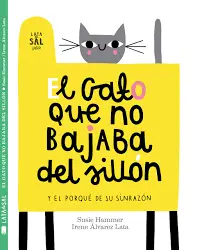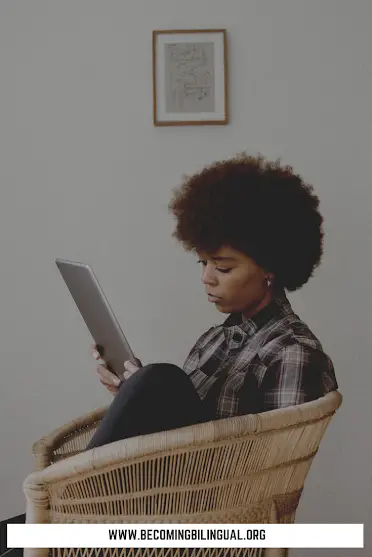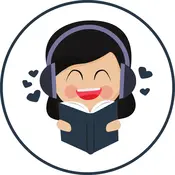How To Use These Epic Online Spanish Books For Beginners

Part of being truly bilingual is being bi-literate and many parents want their children to be able to read in Spanish as well as speak it.
There are some “best practices” when it comes to teaching your child to read in any language.
Nursery rhymes are a great foundation for early literacy. Singing nursery rhymes can have so many benefits like helping your child hear rhyme, word play, and alliteration. they’re also short and easy to memorize, which makes it easier for your child to internalize them and sing along.
I suggest starting with some nursery rhymes, even if your child is school aged. Working with the language will only help to build their foundational literacy skills.
Here are links to some of my favorite Spanish nursery rhymes!
3 Charming Nursery Rhymes To Boost Your Baby’s Spanish
Wonderful Nursery Rhymes That Will Make Your Baby Bilingual
Another crucial building block of early literacy is reading out loud to your child. Reading out loud builds phonological awareness, story structure, and vocabulary.
If you’re looking for some good books to read to your kiddo you can check out this great book:
An Awesome Spanish Picure Book To Use Right Now

While reading out loud is an important first step, there are some key differences in helping your child to read Spanish as opposed to English.
Spanish is a highly phonetic language. Teaching your child the names and sounds of the letters early on is critical. Since most of the letters only make one sound, once children know the letters and vowels, they can start to combine them to read basic one syllable combinations like fa, fe, fi, fo, fu.
This website has a great song for learning the vowels in Spanish:

Learning these syllable patterns will put children on the path to literacy by giving them the tools to sound out basic 2 syllable words like, “gato” or “mama”. For more information on the science behind Spanish literacy, check out this website:
https://www.colorincolorado.org/article/early-literacy-instruction-spanish-teaching-beginning-reader
Now that you have a quick background on early Spanish literacy, I want to share a resource with you that can help your kiddo on a variety of levels.
EPIC!
Epic! Is a website has an extensive collection of books online. While it usually requires a subscription, it is free to use during the COVID pandemic, so it’s a great time to try it out! There are 3 main ways that you can use Epic as a resource for helping your child to read in Spanish.
Audiobooks
Epic! has a nice collection of Spanish audiobooks, picturebooks that are read aloud in Spanish. The titles include some well known English picture books that have then been translated into Spanish, like “Chrysanthemum” (Crisantemo) and others that are written by Hispanic authors such as, “Chato y Los Amigos Pachangueros”.
Listening to audiobooks is a great way to build Spanish literacy because it works on the same foundational skills that you would build by reading aloud to a child and it also exposes them to a variety of native Spanish speakers and Spanish language.

Read-to-me
This section may be the most helpful for early readers. When you’re navigating the Epic! website, you can sort out all of the read-to-me books. You can then filter them by level.
For a new reader you can sort out the level “A” books. This provides your child with very basic books that have 2-4 words on each page and the pages usually follow a distinct pattern.
When you click the book to start, a narrator will read the text and the word that the narrator is reading will illuminate, allowing your child to see and hear the correct word at the same time.
This is an amazing way for your child to learn to read basic Spanish words! Research shows that seeing and hearing a word at the same time help to store that word in your brains long term memory and will help you to pronounce it correctly on your own.
Epic! has a huge collection of read-to-me books, spanning several grade levels, so there is bound to be something that will meet the needs of your child, whether they’re ready for A level books or chapter books.
Books
The book section is just like the read-to-me section but without the audio. This section would be for children who have has some work in Spanish reading and are ready to try reading some books on their own.
This could be basic books, like the A books mentioned above, or harder books that have more words per page and less picture support.
The great part about the Spanish book collection is that it’s quite extensive, including a wide array of fiction and nonfiction books as well as several books that tie into Hispanic culture.
For more information, and to test it out, you can follow this link to the Epic website:
For more resources for teaching your school age child Spanish, check out this link:
Learning to read in Spanish is a great way to build your child’s vocabulary and their Spanish language skills. I hope that these resources were able to help you and your child get started with reading in Spanish!
Happy Learning!
Don’t forget to subscribe here to get my latest posts and resources delivered straight to your inbox!
10 thoughts on “How To Use These Epic Online Spanish Books For Beginners”